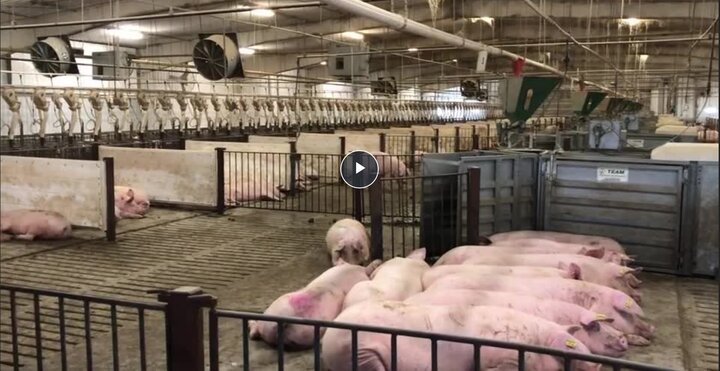Research Areas
Precision Livestock Management. The main areas we focus on are:
- Management
- Animal
- Environment
The AMI Lab is focused on an engineering approach to improved animal well-being and production efficiency. This accomplished by utilizing Precision Animal Management – a method of managing animals based on real-time individual data, while operating in conventional production systems – is a novel approach to improve production, health, and well-being. Current trends in animal agriculture (larger herds, smaller labor force) and the increased pressure to optimize production efficiencies and address animal well-being necessitate new approaches for animal management. A precision animal management system needs to be simple in design, robust and well-protected from the environment, and provide information, not data, to the producer.

Read to learn more about how we incorporate these topics in our past and current research projects:
Management:
Example: Modeling Individual Responses Daily monitoring of animal behavior and activities is important to identify changes in daily patterns that may be associated with disease in animals or problems with the production system. Early identification allows the problem to be resolved quickly before causing damage to the health and productivity of animals. In order to identify individual animal feeding behavior, an autoregressive model was developed to identify decreases in feeding time.
Modeling Individual Responses Daily monitoring of animal behavior and activities is important to identify changes in daily patterns that may be associated with disease in animals or problems with the production system. Early identification allows the problem to be resolved quickly before causing damage to the health and productivity of animals. In order to identify individual animal feeding behavior, an autoregressive model was developed to identify decreases in feeding time.
Animal:
Body condition score (BSC) are useful to access the health condition of the pigs. BSC usually is accessed through visual observation or with the use of instruments to measure angularity of the animal’s back. Besides that, these forms of evaluations can be imprecise, time consumption or stressful to the animals.
Some studies have been developed to access the BSC through RGB images. Image processing is applied to segment the animal from the original image and relate the width of the back side of the animal and the BSC. Different algorithms can be used to make the process and automatic and reduce the human imprecisions.
Environment:
In the past, most swine maternity rooms maintain an ideal temperature for the sows and heat lamps are used to heat piglets. Even so, in the standard configuration of the cages, the heating of the milks can reach the sow area. Additionally, an inefficient heating system brings risks for piglets that tend to seek heat from the mother's body and can be crushed. Different farrowing crate designs (offset, standard and diagonal) have been studied to create different microenvironment to the piglets and the sow and also to provide a greater resting and locomotion area for the piglets.
Click here for an interview with Dr. Tami Brown-Brandl discussing how Precision Animal Management has transformed how producers operate in the industry.
It always seems impossible until it is finished.
--Nelson Mandela